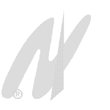|
ČESKÁ TECHNICKÁ NORMA |
|
ICS 97.220.40 |
|
Srpen 1998 |

|
Potápěčská výzbroj - Šnorchly - |
ČSN 94 0911 |
|
|
|
|
Diving accessories - Snorkels - Safety requirements and test methods
Accessoires de plongée - Tubas - Exigences de sécurité et méthodes ïessai
Tauch-Zubehör - Schnorchel - Sicherheitstechnische Anforderungen und Prüfverfahren
Tato norma přejímá anglickou verzi evropské normy EN 1972:1997. Evropská norma EN 1972:1997 má status české technické normy.
This standard implements the English verzion of the European Standard EN 1972:1997. The European Standard EN 1972:1997 has the status of a Czech Standard.
© Český normalizační institut, 1998
Podle zákona č. 22/1997 Sb. smějí být české technické normy rozmnožovány a rozšiřovány jen se souhlasem Českého normalizačního institutu.
|
|
|
53052 |
Národní předmluva
Citované normy
EN 71-3 zavedena v ČSN EN 71-3 Bezpečnost hraček - Část 3: Migrace určitých prvků (94 3095)
ISO 868 zavedena v ČSN 62 1431 (mod) Pryž, plasty a ebonit - Stanovení tvrdosti vtlačováním hrotu tvrdoměru (Tvrdost Shoe)
IEC 50(845):1987 zavedena v ČSN IEC 50(845) Mezinárodní elektrotechnický slovník - Kapitola 845: Osvětlení (33 0050)
Vypracování normy
Zpracovatel: VELNOR, spol. s.r.o., Brno, IČO 44016174, Ing. Eva Velešíková
Pracovník českého normalizačního institutu: Luboš Ptáček
|
EUROPEAN STANDARD |
EN 1972 |
|
NORME EUROPÉENNE |
July 1997 |
|
EUROPÄISCHE NORM |
|
|
|
|
|
|
|
|
|
|
|
|
|
|
|
|
|
|
|
|
|
|
ICS 97.220.40
Descriptors: Skin diving, sport equipment, diving equipment, safety, specifications, accident prevention, dimensions, end pieces, tests, utilization, instructions, labelling, marking
English version
Diving accesories - Snorkels - Safety requirements and test methods
Accessoires de plongée - Tubas - Exigences de sécurité et méthodes d'essai
Tauch-Zubehör - Schnorchel - Sicherheitstechnische Anforderungen und Prüfverfahren
This European Standard was approved by CEN on 1997-06-19. CEN members are bound to comply with the CEN/CENELEC Internal Regulations which stipulate the conditions for giving this European Standard the status of a national standard without any alternation.
Up-to-date lists and bibliographical references concerning such national standards may be obtained on application to the Central Secretariat or to any CEN member.
The European Standards exist in three official versions (English, French, German). A version in any other language made by translation under the responsibility of a CEN member into its own language and notified to the Central Secretariat has the same status as the official versions.
CEN members are the national standards bodies of Austria, Belgium, Czech Republik, Denmark, Finland, France, Germany, Greece, Iceland, Ireland, Italy, Luxembourg, Netherlands, Norway, Portugal, Spain, Sweden, Switzerland and United Kingdom.
CEN
European Committee for Standardization
Comité Européen de Normalisation
Europäisches Komitee für Normung
Central Secretariat: rue de Stassart, 36 B - 1050 Brussels
(C) 1997 CEN - All rights of exploitation in any form any by any means reserved worldwide for CEN national Members.
Ref. No. EN 1972:1997 E
Obsah |
|
strana |
|
|
|
|
Contents |
|
|
Page |
|
|
Foreword |
2 |
|
Introduction |
2 |
1 |
Scope |
3 |
2 |
Normative references |
3 |
3 |
Definitions |
3 |
4 |
Safety requirements |
3 |
5 |
Test methods |
5 |
6 |
Warning label |
6 |
7 |
Instructions for use |
7 |
8 |
Marking |
7 |
Foreword
This European Standard has been prepared by Technical Committee CEN/TC 136 „Sports, playground and other recreational equipment", the secretariat of which is held by DIN.
This European Standard shall be given the status of a national standard, either by publication of an identical text or by endorsement, at the latest by January 1998, and conflicting national standards shall be withdrawn at the latest by January 1998.
According to the CEN/CENELEC Internal Regulations, the national standards organizations of the following countries are bound to implement this European Standard: Austria, Belgium, Czech Republik, Denmark, Finland, France, Germany, Greece, Iceland, Ireland, Italy, Luxembourg, Netherlands, Norway, Portugal, Spain, Sweden, Switzerland and United Kingdom.
Introduction
A snorkel allows the user to breathe, when faced downward, without having to raise the mouth out of the water. However, using a snorkel complicates the breathing process.
At normal breathing conditions, a certain amount of residual air remains in the bronchial tubes and trachea, referred to as the natural dead space. When using a snorkel, an artificial dead space is added, thus increasing the total dead space. This, in turn, decreases the fraction of the inhaled air volume participating in the respiratory exchanges.
Moreover, the submerged length of the snorkel shifts the static balance of the respiratory system. Lastly, dependent on the snorkel's dimensions and shape the breathing resistance increases.
This standard deals with these problems in terms of setting constructional as well performance requirements. Accordingly, corresponding test methods are assigned.
The protection offered by a snorkel cannot guarantee the absence of accidents of fatal outcome or leading to long term disability. For this reason, due care should always be exercised when using a snorkel.
1 Scope
This standard specifies safety requirements in order to increase the safety in the use of snorkels for swimmers and divers.
This standard is applicable to snorkels, which allow users to breathe at the water surface whilst floating with the face submerged. It covers snorkels used by swimmers, skin divers as well as SCUBA (acronym for self contained underwater breathing apparatus) divers.
This standard is not applicable to combined face masks and snorkels, in which the snorkel tube opens into the face mask.
-- Vynechaný text --
Zdroj: www.cni.cz